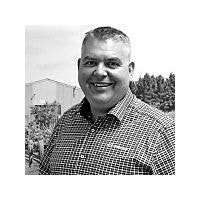
Fertilising your post-harvest silage blocks
Summer is on its way and farms will be experiencing peak pasture production, with supply greater than the demand of the animals grazing it. At this time farmers and lifestyle block owners will be ‘locking up’ paddocks to grow a large quantity of pasture which can be turned into silage or hay.
Making the most of good growing conditions to generate quality conserved feed is of the utmost importance, though be aware of the insidious effect of removing silage/hay on the nutrient status of soils which are vital to sustaining long-term production.
Conserved pasture is a valuable feed source that is needed to meet a feed gap later in the season and an important management tool to help maintain pasture quality. As it is unlikely that all the conserved pasture will be fed out on the block it was harvested on, taking silage/hay cuts can empty the nutrient tank of soil. A good analogy is, ’just because you can put your foot flat on a car’s accelerator pedal doesn’t mean that the tank is full of petrol’. And of course, ‘the faster you go, the quicker the tank empties’. For every tonne of dry matter harvested, it removes around 5 kg of phosphate, 3 kg of sulphur, 2 kg of magnesium and 15 to 20 kg of potassium. If these nutrients are not replaced, the ‘nutrient tank’ eventually empties resulting in a reduction in pasture production and reversion to poorer quality species.
Given this depletion in soil nutrients, it is vital for these to be replaced once silage/hay has been removed. Post-harvest fertiliser does not replace normal maintenance fertiliser, rather it is an extra application to replenish the nutrients removed by the harvest alone. You can either apply this replacement fertiliser separately after harvest or combine it with maintenance fertiliser, ensuring a heavier rate goes on your hay and silage paddocks.
The actual amount of nutrients that need to be replaced with fertiliser following the harvest of silage/hay depends on several factors. For example, when pasture is harvested on a runoff block or silage/hay block and not fed back onto the area from where it was harvested, there will be a net export of nutrient from this area which needs to be replaced. Conversely, where silage/hay is harvested and fed back out on the same area and the soil chemical fertility is above optimum, withholding fertiliser inputs following silage harvest may be a viable option. Utilise soil testing to assist you with your decision making.
Irrespective of the scenarios given above, a post-harvest application of nitrogen can be used, depending on soil moisture, to boost yields for a second cut and to allow a more rapid return to grazing to help build up feed prior to the drier summer period.
If you are taking silage/hay this season, contact your local PGG Wrightson Technical Field Representative to discuss your post-harvest fertiliser requirements.



